Leiden, UB, VLQ 103
What’s inside?1
Leiden, UB, VLQ 103, is a rhetorical compilation containing two of the most popular classical works on rhetoric, namely Cicero’s De inventione (ff. 1-46r) and the Pseudo-Ciceronian Rhetorica ad Herennium (ff. 52v-102r). The texts are sandwiched around a copy of the fourth book of Boethius’s De differentiis topicis (ff. 46r-52v).
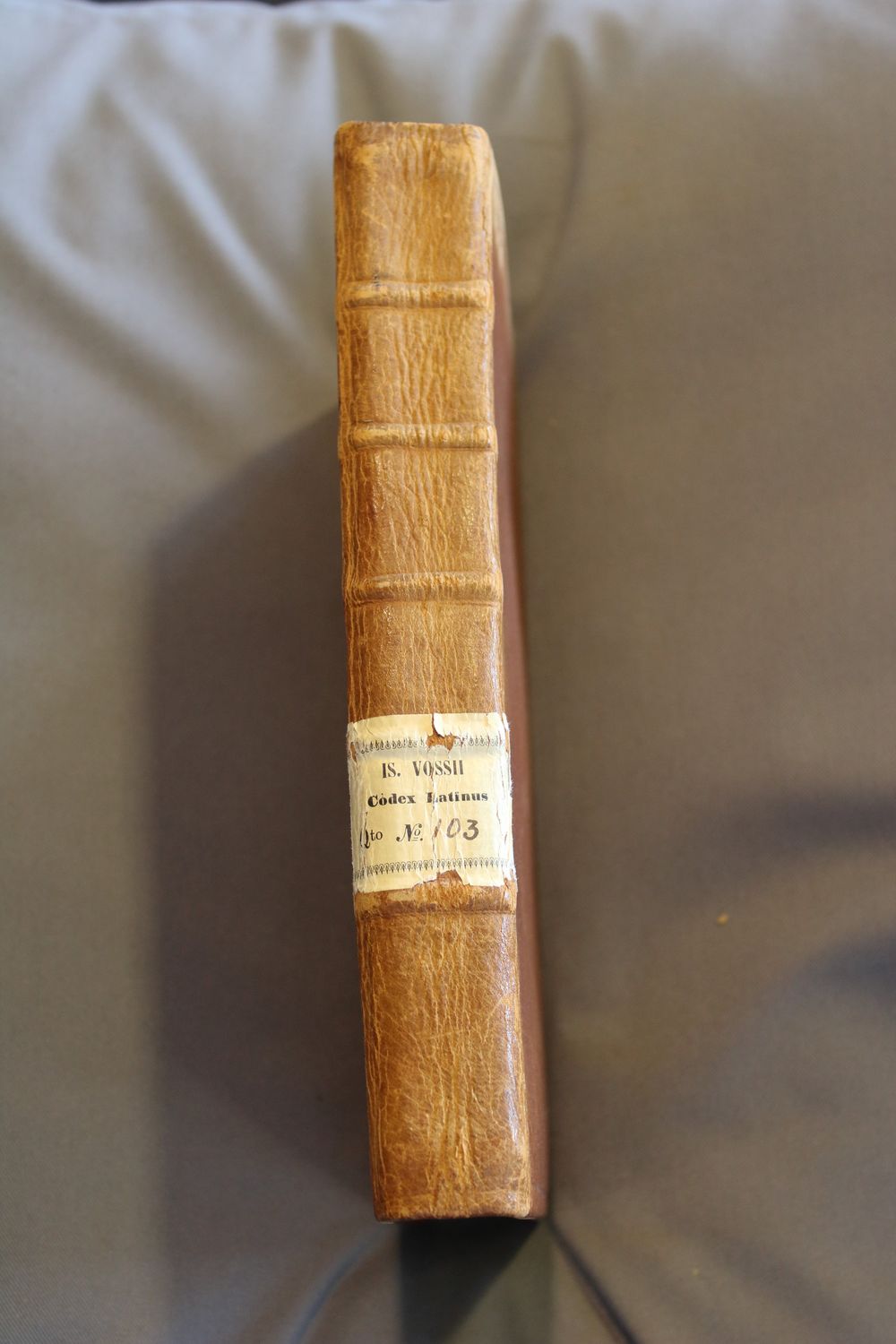

Where did it come from?
The script and decoration of this manuscript suggest that it was made in Italy in the second half of the twelfth century. Gold is used to highlight major initials throughout the volume, making this a rare example of a deluxe schoolbook.
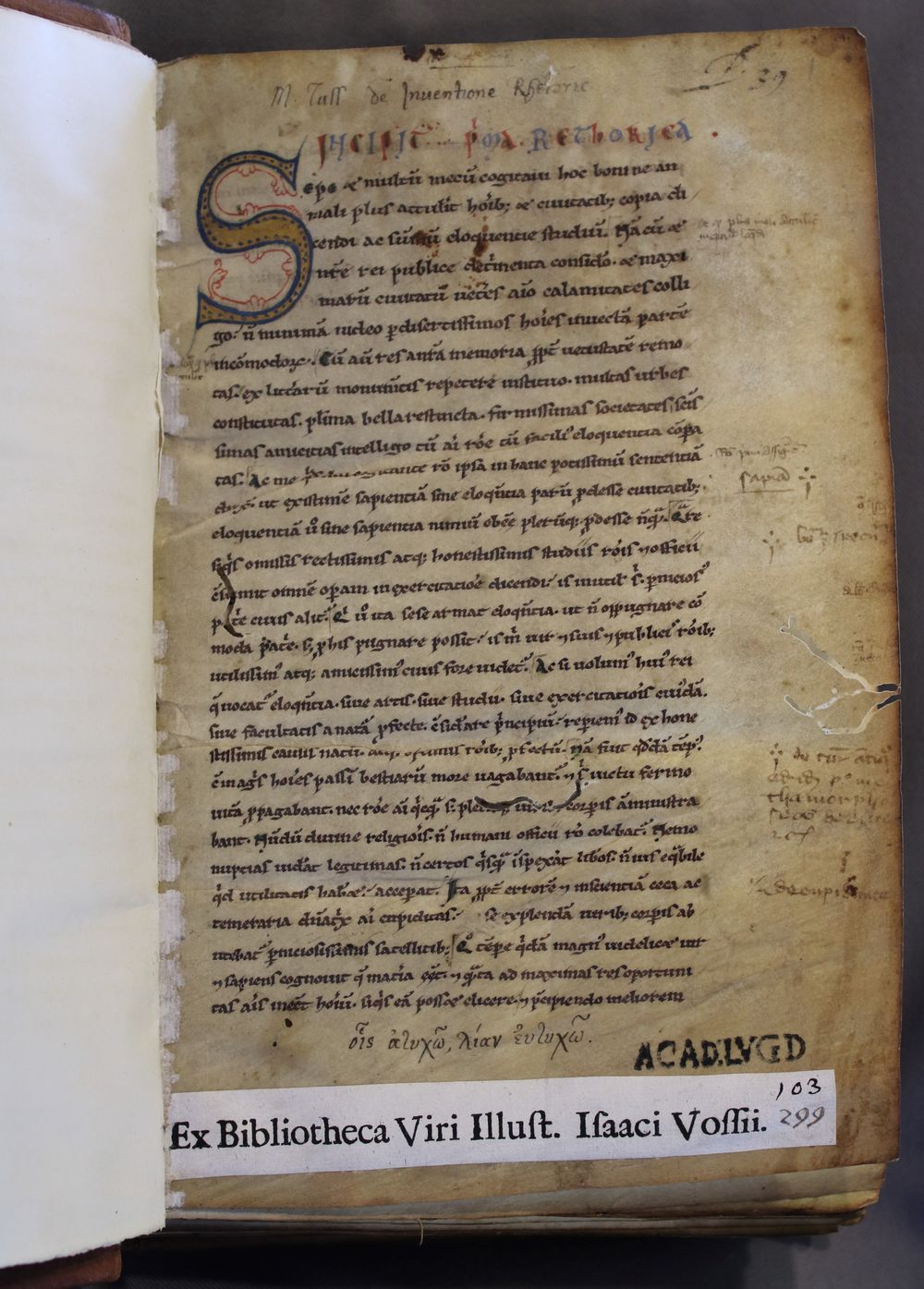

However, this ownership description notes that the manuscript belonged to the theological faculty of the Sorbonne in Paris, and was gifted to it by Gerard d’Abbeville (d. 1272). The ownership inscription is now largely illegible. This is because it was treated with reagent, a chemical mixture that was used by scholars and librarians in the late nineteenth and early twentieth century to reveal damaged and faded text. As we can see, the reagent has caused permanent damage to the parchment.
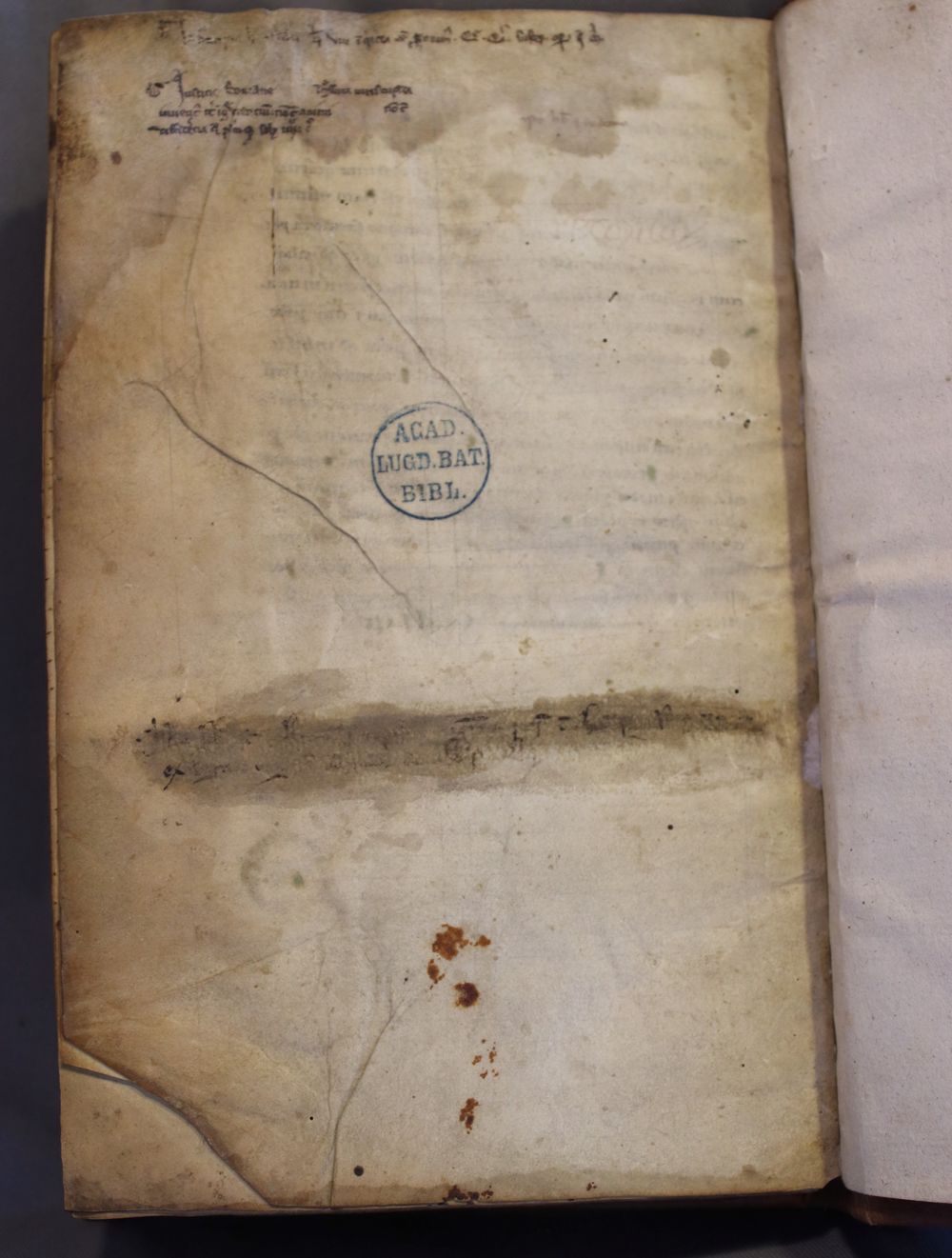

K. A. De Meyïer, cataloguer of the Vossius manuscript collection, was also able to match the volume to a manuscript described in a catalogue of the library of Sorbonne made in 1338. The key clue which facilitated the matching of the entry (“Libri Tullii et Boecii (...) Rhetorica Tullii. Incipit in 2o fol. ‘tum odii’, in pen. ‘in animatas’. Precium VII. sol.”) to this manuscript is the indication of the first words found on f. 2r of the manuscript (“tum odii”) and on its penultimate folio (f. 101r, “in animatas”). Given that manuscripts were copied by hand, it was highly unlikely that any other copy of the rhetorical works within the library’s collection would have exactly these words at precisely these points. The final detail recorded in the catalogue entry is an estimate of the book’s value, seven solidi.
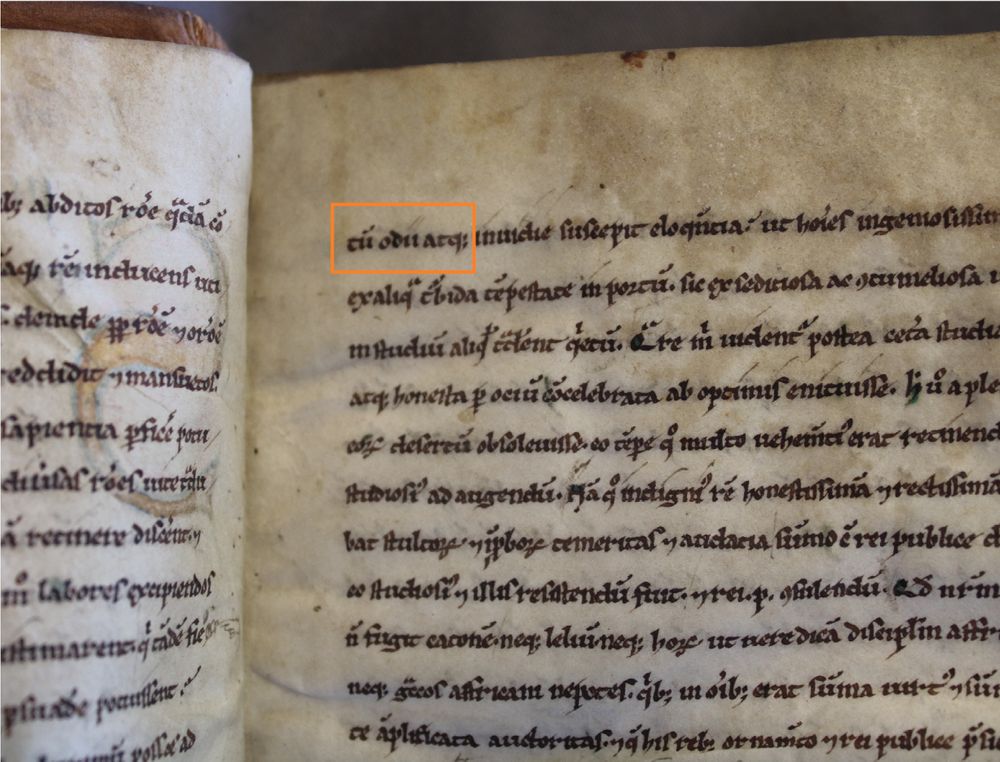

Glossing with schemata: De inventione
The manuscript was annotated by a thirteenth-century user. This annotator glossed the text using stemmatic diagrams. Nine schemata were added to the text of De inventione, clustering near the beginning of the text (ff. 3r-7r). These two schemata, added in the outer margin of f. 4v, summarise De inventione, I.XIV.19-20.15, where Cicero describes the parts of an oration (exordium, narrative, partition, confirmation, refutation, conclusion) and the types of cases (honourable, difficult, mean, ambiguous, obscure). The schemata were placed adjacent to the text in the margin, reinforcing the enumeration already supplied in the text while directing the reader’s eye to the relevant passages.
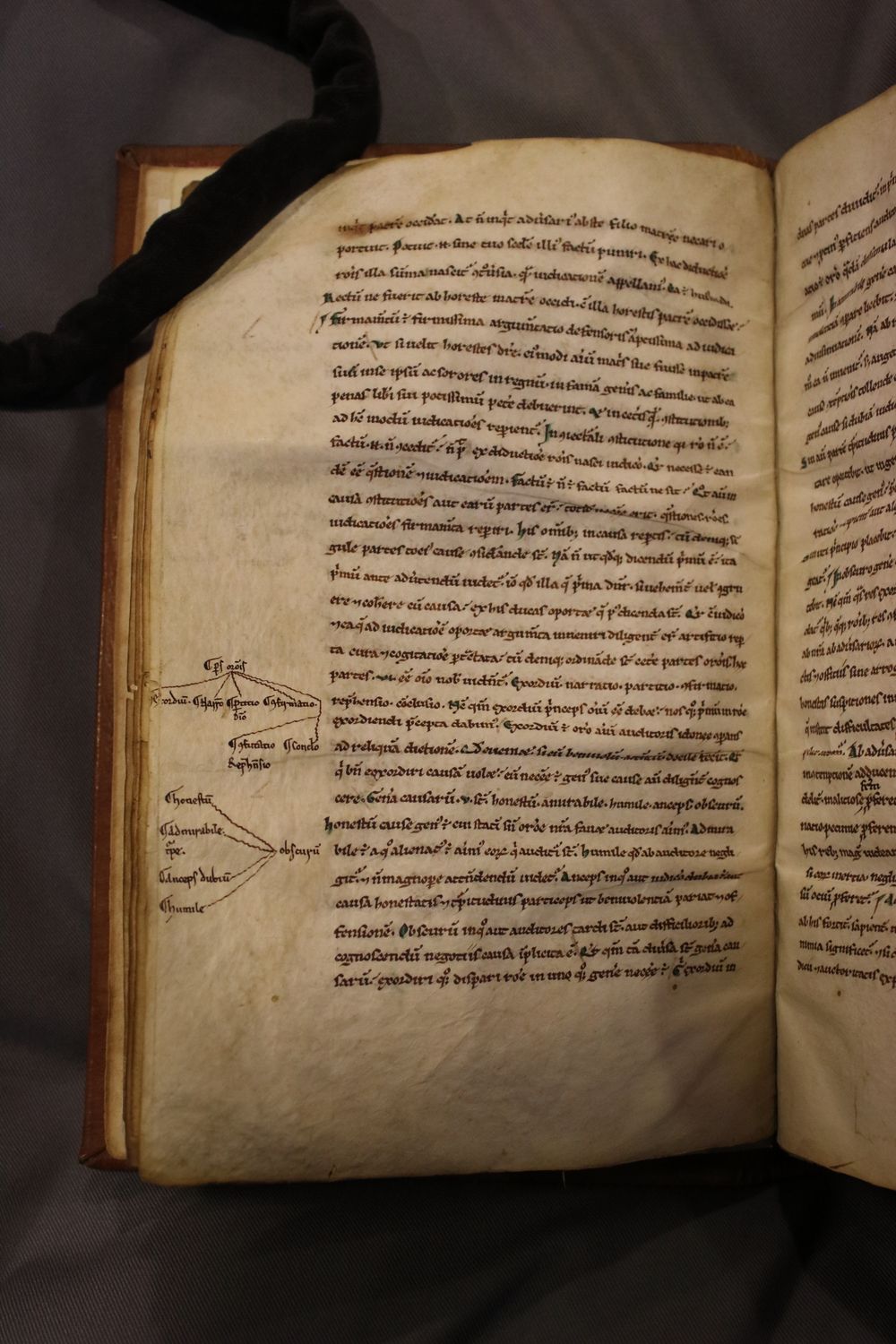

Judicial rhetoric and the Rhetorica ad Herennium
By contrast, twenty-eight schemata were added to the text of the Rhetorica ad Herennium by the annotator. The enhanced attention paid to this text is characteristic of trends in thirteenth-century rhetorical study when this work, which contained more practical information relevant to judicial rhetoric, was intensively studied. This diagram, added on f. 63r, summarises the types of law enumerated in Rhetorica ad Herennium, II.XIII.19: natural law, statute law, custom, precedent, equity and agreement.
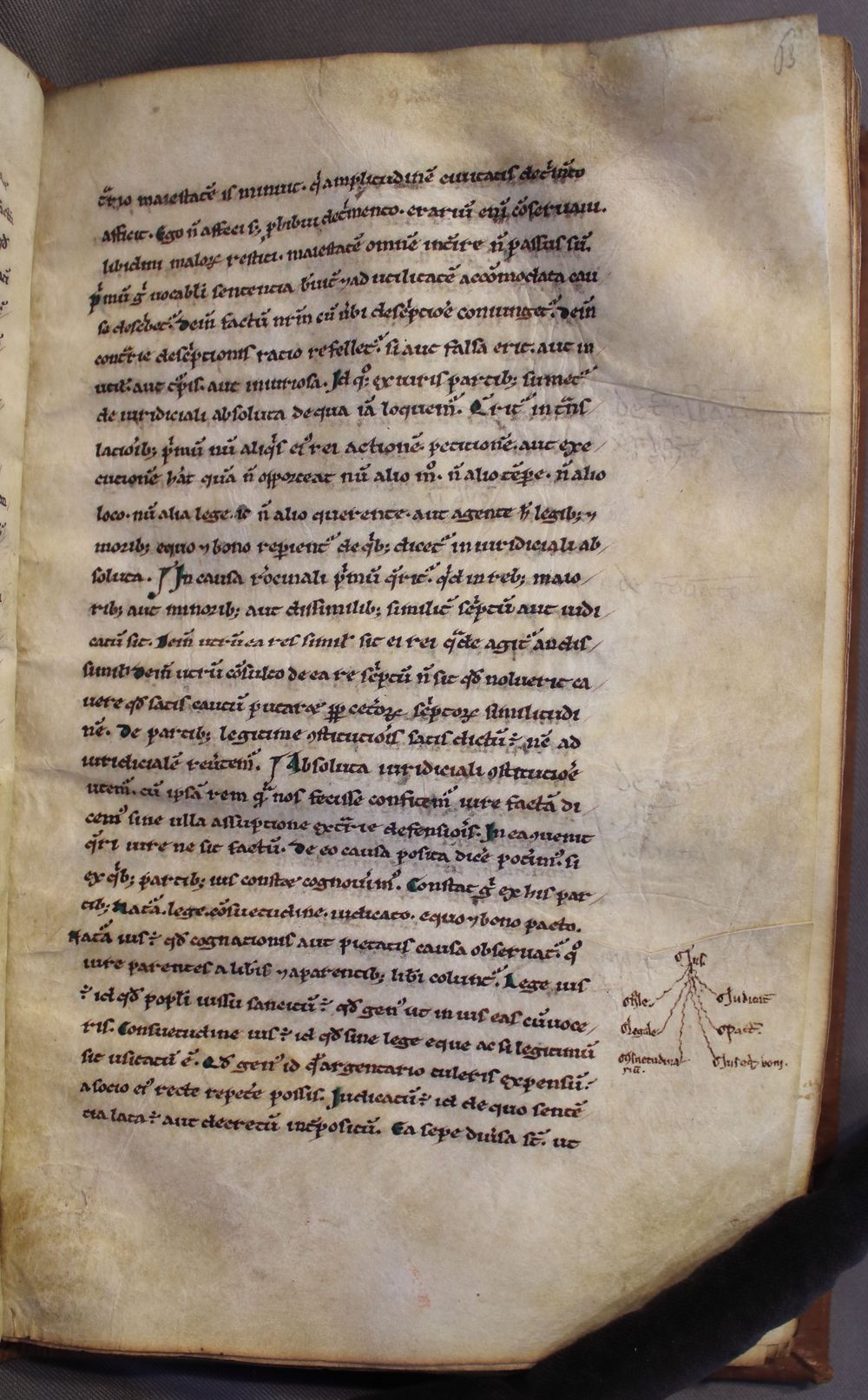

Following the text
The majority of the schemata follow the text closely, even slavishly. This scheme on f. 55r summarises types of narrative (Rhetorica ad Herennium, I.VIII.12-13). In the text, these features of the narrative are successively subdivided and enumerated. The scheme connects these subdivisions into one, allowing the reader to follow the argument at a glance, and perhaps making it easier to understand and recollect.
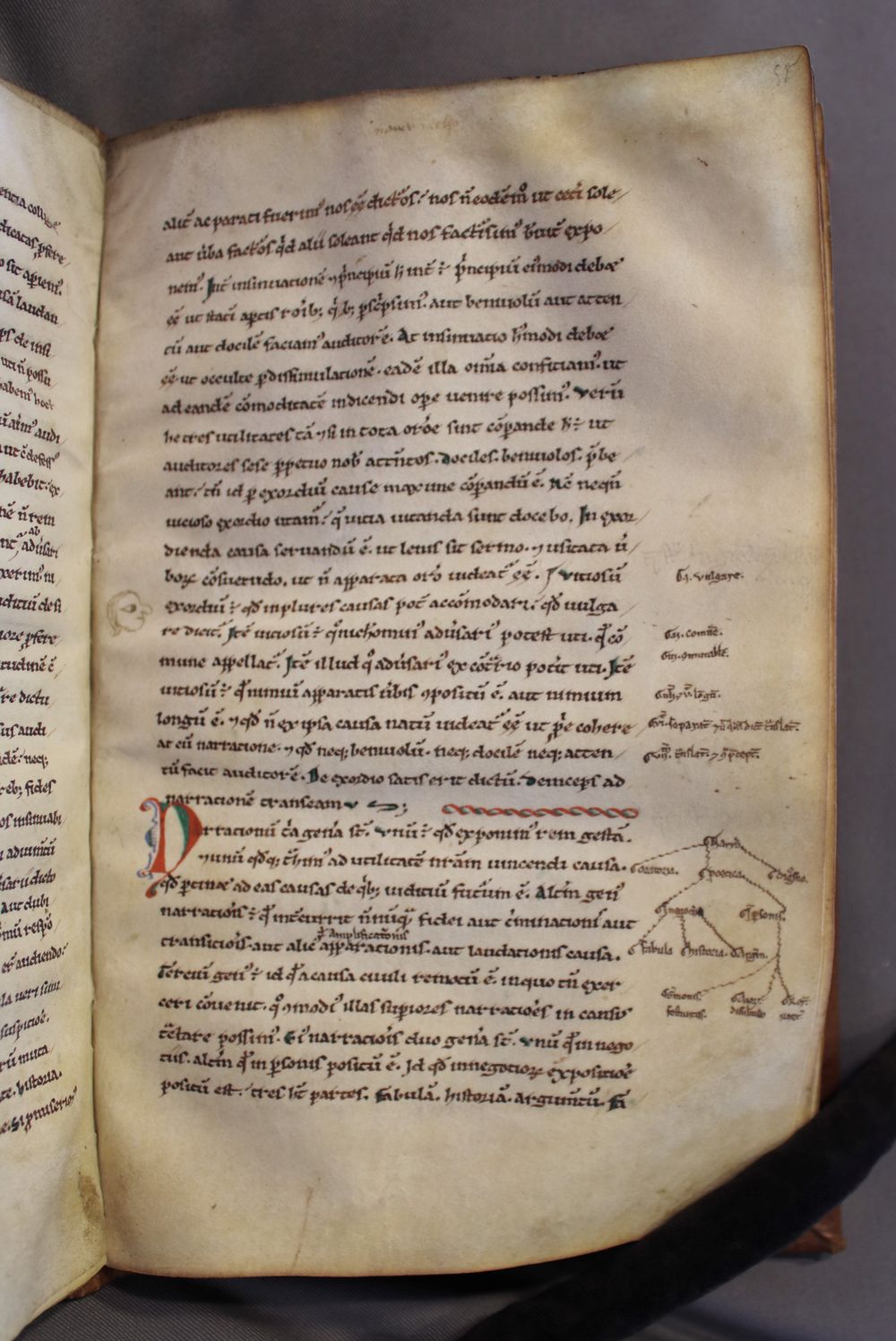

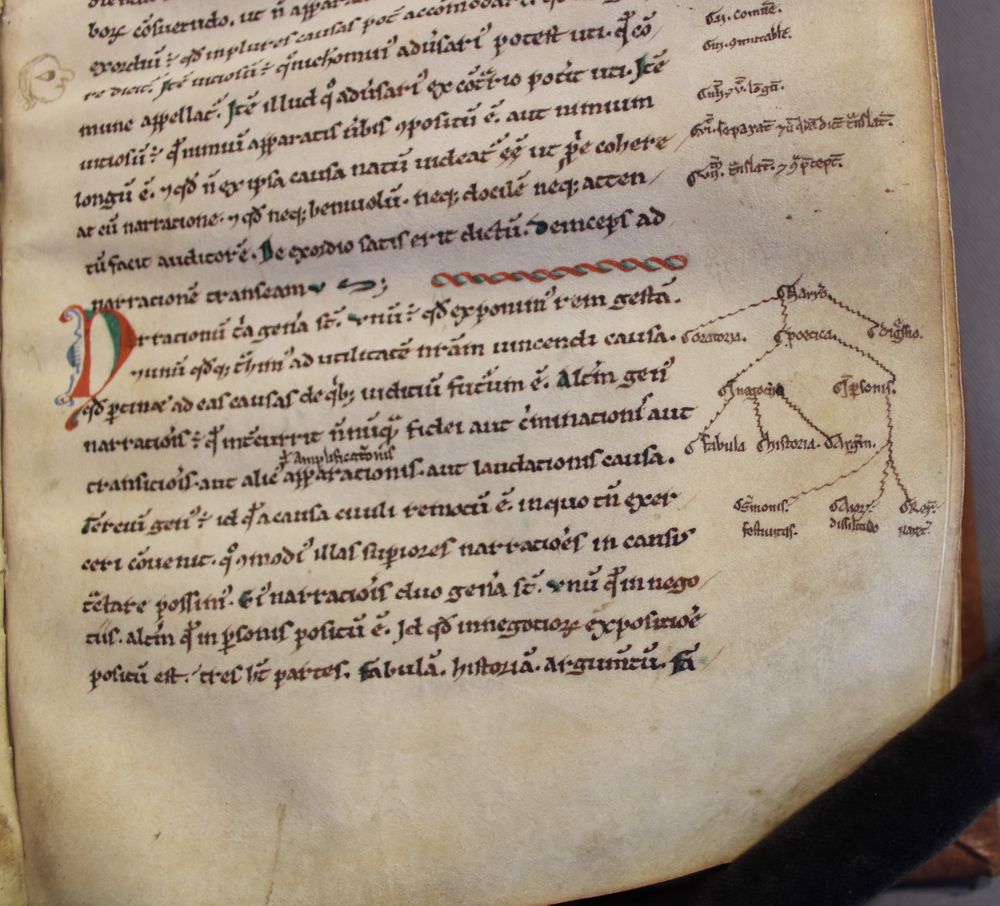

Adding to the text
There are only two instances where the schemata add information to the text. Here a list of circumstances (“quis, quid, ubi, quibus auxilius, cur, quando”, “who, what, where, with whom, why, when”) has been added to a scheme depicting the divisions of plausible narratives (Rhetorica ad Herennium, I.IX.16). The list, probably well-known to the reader, chimes with the subject of the passage; answering these circumstantial questions would flesh out any account of an event.

This list, threading down the side of the text of Rhetorica ad Herennium, II.III.3-5, enumerates the attributes of persons: name, nature, manner of life, fortune, habit, feeling, interests, purposes, achievements, accidents, speeches made. This list, which is lifted from De inventione, II.17-28, serves to connect the two texts in the mind of the reader and adds relevant (albeit not particularly innovative) material to the discussion of ways to make an argument sound more plausible.
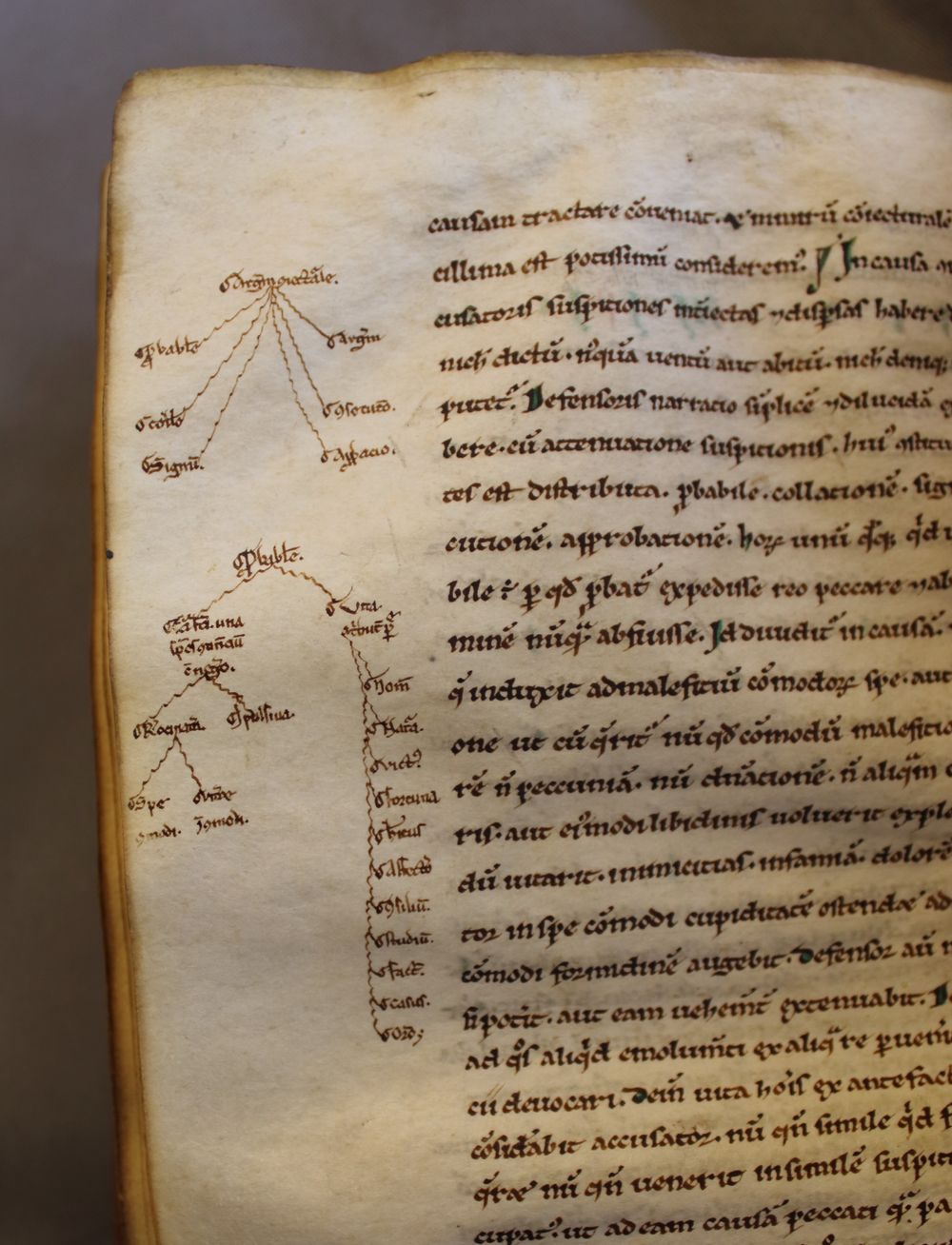

Form serves function
This scheme of the parts of advantage, “utile”, (glossing Rhetorica ad Herennium, III.II.3) shows how the schemata serve the dual function of summarising the text as well as pointing the reader to relevant sections. By elongating the scheme (using wavy connecting lines between the textual elements) the glossator ensures that its divisions are, by and large, adjacent to the part of the text to which they pertain. This allows the reader to quickly find the relevant divisions in the text, transforming the scheme into a sort of roadmap to this passage.
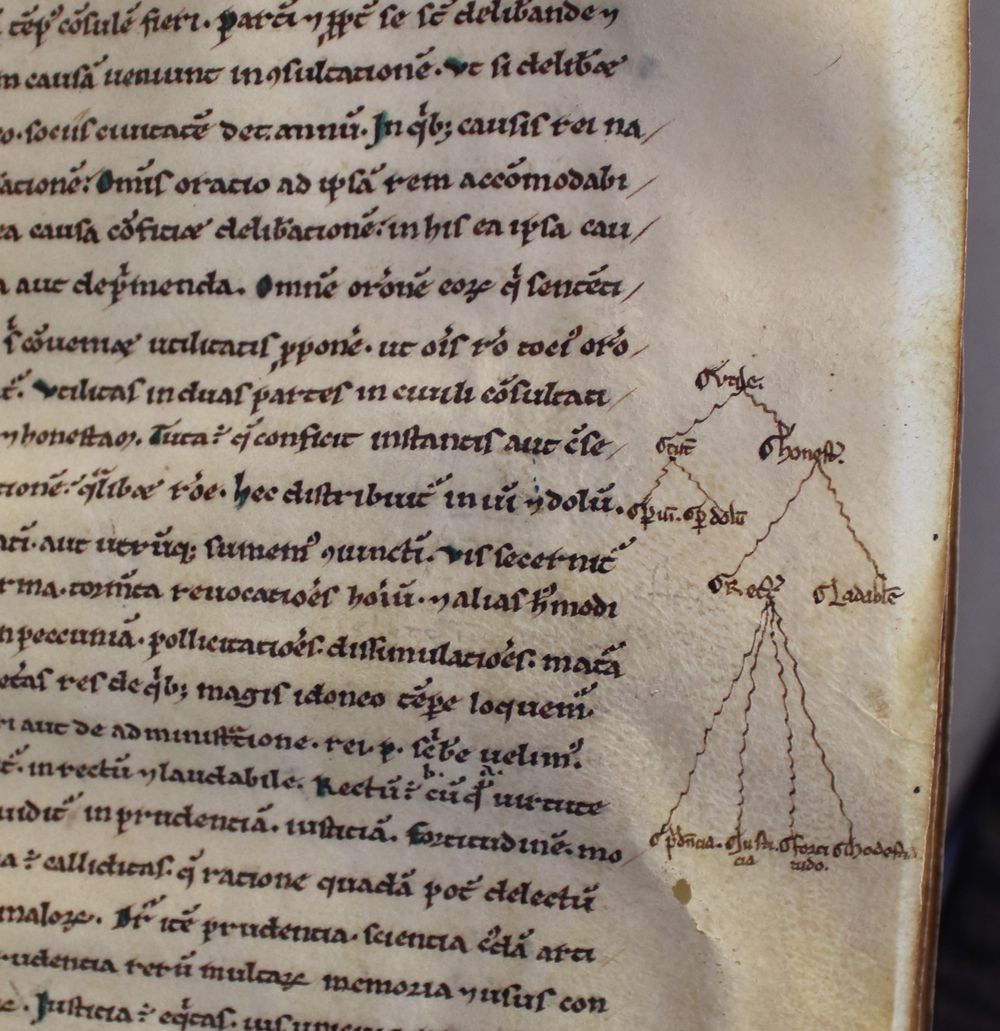

Boethius: De differentiis topicis, Book IV
The two rhetorical texts by and attributed to Cicero are separated in the manuscript by a short work, the fourth book of Boethius’s De differentiis topicis. Whereas the rest of Boethius’s De differentiis topicis deals with logic, this part tackles rhetorical argumentation, particularly Cicero’s discussion of the circumstances defining a case (who, what, where, when, why, how, and by what means). Thematically speaking, the text was a popular accompaniment to the Ciceronian rhetorical works. Moreover, its short length meant that it could easily be appended without unduly increasing the length of a manuscript; here, for example, it takes up only seven leaves of parchment (ff. 46r-52v) and so requires less than a full regular quire of eight leaves.
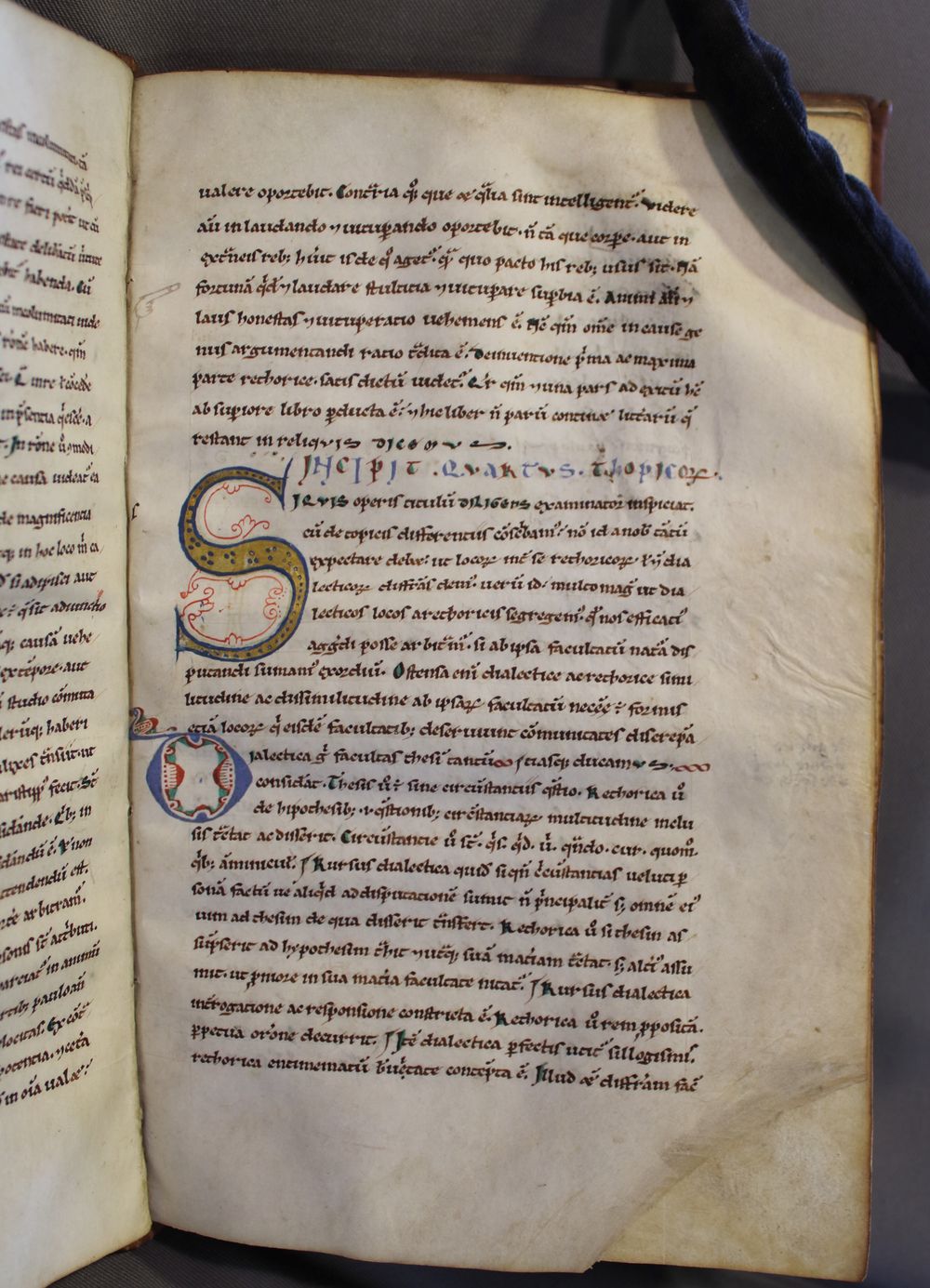

This part of the text is glossed by a hand which is not active in the rest of the manuscript, but also dates to the thirteenth century. We can see some examples of the glossator’s technique in this passage. First, he transliterates a Greek word, writing “thesim”, “thesis”, above it. He indicates in the margin that this discussion pertains to the parts of oratory, and distinguishes these parts in the text by inserting short vertical lines between the words. Finally, he clarifies what the pronoun “eisdem” refers to, that is, to the species of rhetoric. In short, he clarifies the text for the reader.


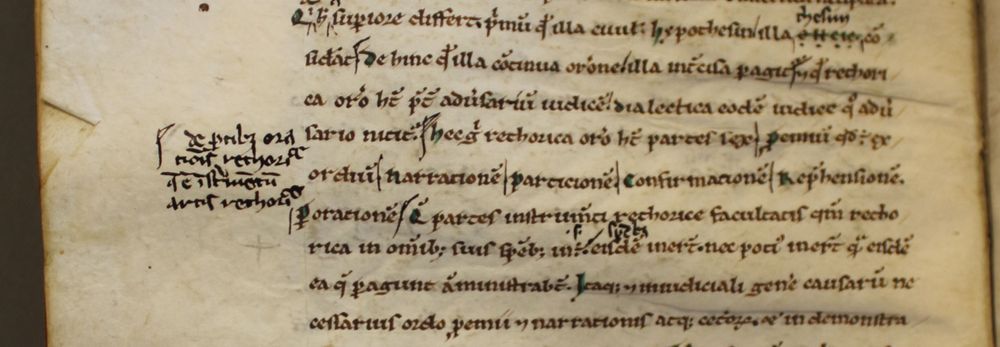

Sources used for this contribution:
- Cicero, De inventione, De optimo genere oratorum, Topica trans. H. M. Hubbell (LCL, 386; Cambridge MA, Harvard University Press, 1949)
- [Pseudo-]Cicero, Rhetorica ad Herennium, trans. H. Caplan (LCL, 403; Cambridge MA, Harvard University Press, 1954)
- De Meyïer, K. A., Codices Vossiani Latini, II: Codices in quarto (Leiden, Leiden University Press, 1975)
- Gumbert, J. P., ‘Cicerones Leidenses’, in C. A. Chavannes-Mazel and M. M. Smith (eds) Medieval Manuscripts of the Latin Classics: Production and Use (Leiden: Anderson-Lovelace and the Red Gull Press, 1996), 209-44
- O’Daly, I., ‘Managing knowledge: Diagrammatic glosses to medieval copies of the Rhetorica ad Herennium’, International Journal of the Classical Tradition, 23 (2016), 1-28
- O’Daly, I., 'The Classical Revival', in Erik Kwakkel and Rodney Thomson (eds) The European Book in the Twelfth Century (Book chapter, Cambridge University Press, 2018. 240-58)
- Rouse, R. H. and Rouse, M. A., Authentic witnesses: Approaches to medieval texts and manuscripts (Notre Dame IN, University of Notre Dame Press, 1992)
- Sluiter, I. and Copeland, R., Medieval Grammar and Rhetoric: Language Arts and Literary Theory, AD 300-1475 (Oxford, Oxford University Press, 2012)
- Stump, E., Boethius, De topicis differentiis (Ithaca, Cornell University Press, 1978)
Contribution by Irene O’Daly.
Cite as, Irene O’Daly, “Leiden, UB, VLQ 103”, The art of reasoning in medieval manuscripts (Dec 2020), https://art-of-reasoning.huygens.knaw.nl/vlq103. ↑


